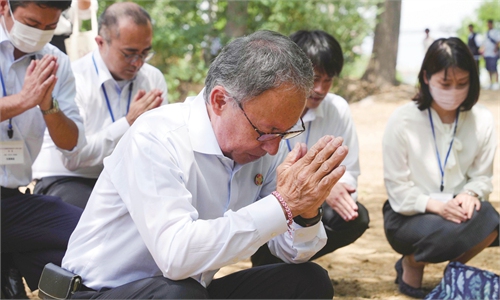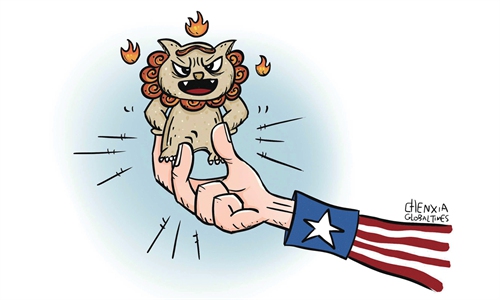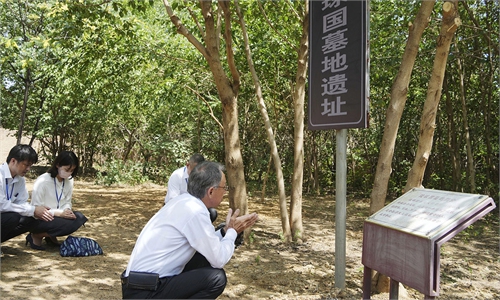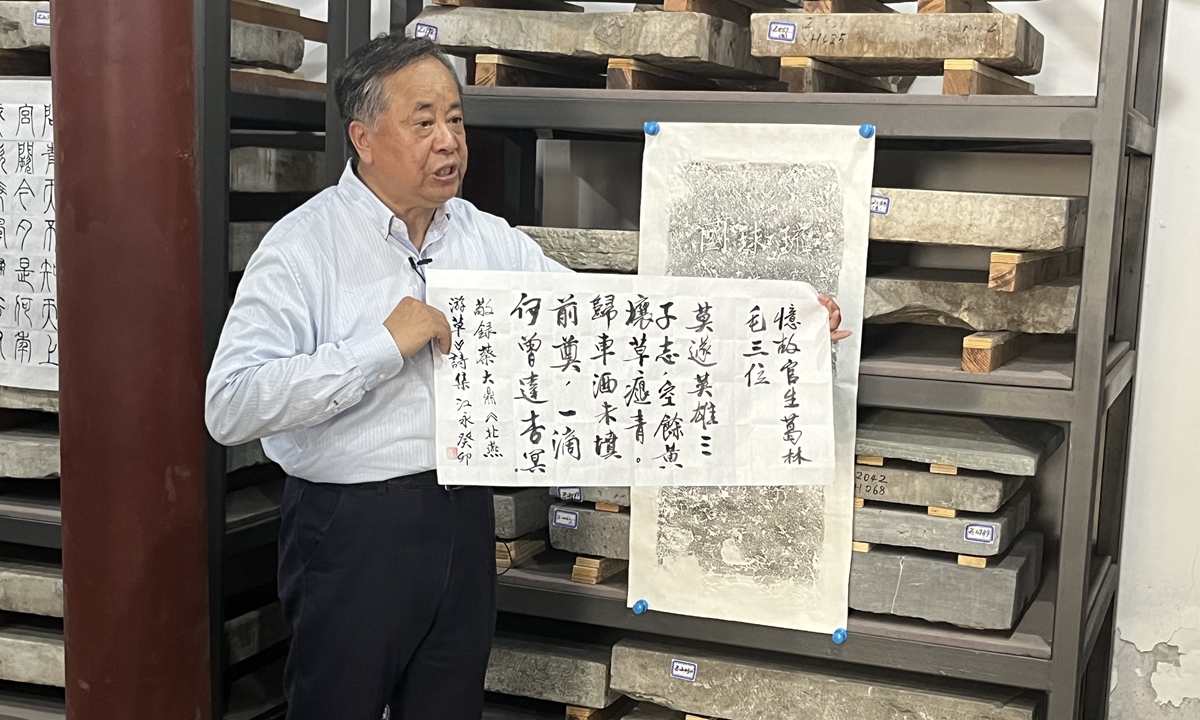
Liu Jiangyong holds a poem by a Ryukyuan student in front of a rubbing of the Ryukyu tombstone in Beijing's Tongzhou district. Photo: Xu Liuliu/Global Times
It is an unremarkable tombstone that looks like the stone used in the stairs in front of mansions during ancient times. However, it is actually the remaining evidence in Beijing of the Ryukyuans burial sites in Zhangjiawan, the capital's eastern Tongzhou district. Shuri Castle, a Ryukyuan gusuku castle, in Shuri Photo: VCG
Although chiseled and damaged due to social changes and wars over hundreds of years, the inscription on the tombstone is still clear.
With its head engraved with "The Ryukyu Kingdom," the tablet has several Chinese characters that say "Tomb of Wang Daye, official Chenqingdutong." Both sides of the tombstone are also inscribed with the date of his death.
"Chenqingdutong is Wang's official title in China as he, a royalist from Kume Village who belonged to the scholar-official class of the Ryukyu Kingdom, came to [China to] tell the truth and plead for help," Liu Jiangyong, vice dean of the Institute of Modern International Relations at Tsinghua University, told the Global Times.
Wang traveled across the sea to Beijing in the hope of seeking help from the Qing Dynasty (1644-1911) to save the Ryukyu Kingdom from Japanese annexation.
He died from an illness in 1888, nine years after the "Ryukyu Disposition," when the Ryukyu Kingdom was annexed by the Meiji government of Japan in 1879.
"Nine years after the Ryukyu Kingdom was invaded and annexed, he was still actively traveling in China as part of the Ryukyu Kingdom Restoration Movement," said Liu after showing the Global Times the tablet that is now part of the Tongzhou Museum's collection.
"More and more Ryukyuan and Chinese people have paid visits to it," a staff member of the museum said. A rubbing of the stone is also placed next to it.
A witness
The tomb stone is not just a precious cultural relic, but also a witness to the 500-year-old friendship and exchanges between Chinese and the Ryukyuan people.
During the Ming Dynasty (1368-1644) and Qing Dynasty, China and Ryukyu had very frequent cultural exchanges and trade ties as kings of the Ryukyu were consecutively conferred by the Chinese emperors.
"Envoys were sent to China to pay tribute and acknowledge allegiance to Chia. Not just them, students and merchants also hoped to visit Beijing for further study and trade," Liu said.
However, it was not an easy task to travel across the sea from the Pacific islands to the capital of ancient China thousands of kilometers away.
According to Chinese scholars including Liu, the Ryukyuans would travel long distances through harsh conditions like strong winds and storms, taking as long as six or seven months before arriving in Beijing.
They took ships to Fuzhou in East China's Fujian Province and then changed to a road trip toward Hangzhou in East China's Zhejiang Province, after which they would return to a boat to travel along the Grand Canal to their destination in Zhangjiawan, Tongzhou.
For various reasons, some of these officials, overseas students and merchants died in China. The cemeteries of the Ryukyuan people were built in four major areas in China, Cangshan in Fuzhou, Zhangjiawan in Tongzhou, Beijing, the road from Fuzhou to Beijing and the southeastern coastal area in China.
Historical records show that the cemetery of the Ryukyu Kingdom in Zhangjiawan was approved by the Kangxi Emperor himself as he appreciated the Ryukyuan officials and people.
Due to its location along the Grand Canal, Zhangjiawan was "the ideal place to allow the Ryukyuan people who were coming and going to pay respects to those who had unfortunately died and been buried."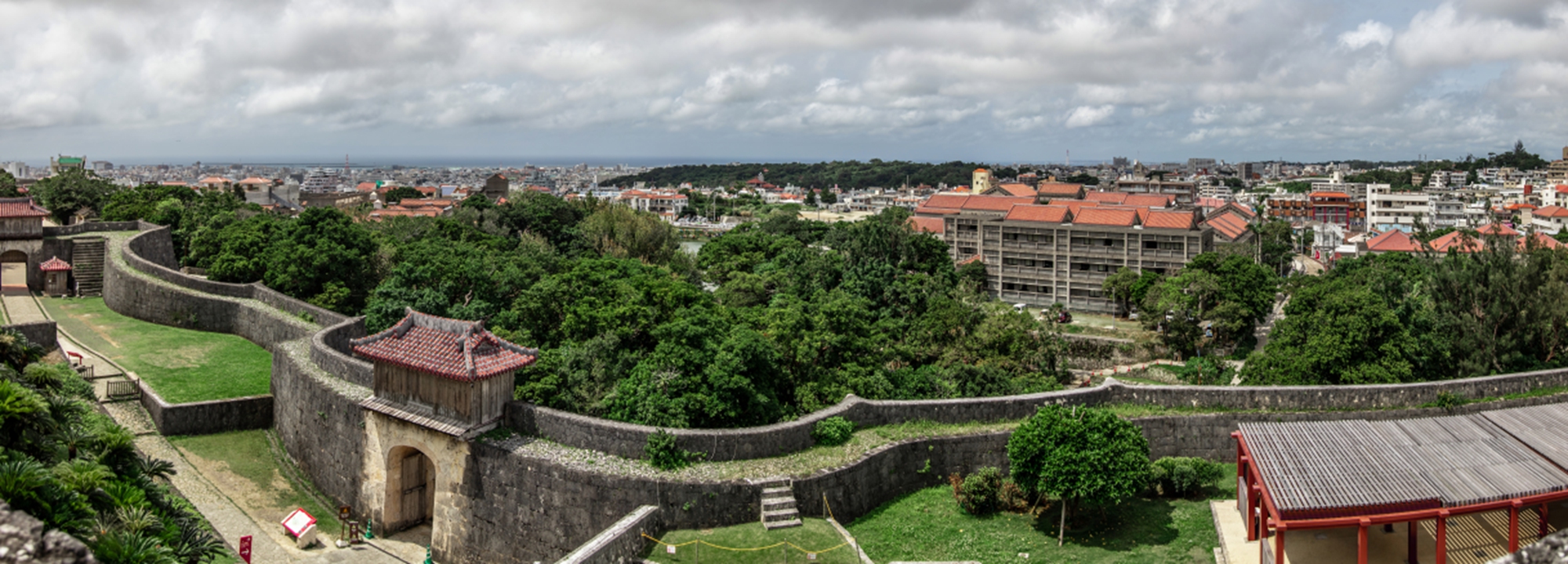
A total of 14 people were buried at the Zhangjiawan cemetery, including Wang and Lin Shigong, or Rin Seikou, whose life story as a Ryukyuan patriot has touched many people since ancient times.
In 1880, Lin, a Ryukyuan official who was stranded in Beijing, repeatedly went on hunger strikes as part of requests for the Qing Dynasty to send troops to help restore the Ryukyu Kingdom. However, as his efforts came to naught, he killed himself with his own sword.
"Why do we need to get more people to learn about the stories of the tombstone of Wang Daye and Li Shigong's patriotic story?" Liu asked.
"Because it is history that is not well known and an untold story we need to know to remember the friendship between China and the Ryukyu Kingdom."
The historical grand occasion of friendly exchanges between China and Ryukyu "has lasted for 500 years," says a document from Sho Tai, the last king of the Ryukyu Kingdom. Their people have left footprints across China and their stories "need to be told."
An exclusive source told the Global Times that a big archaeological investigation will soon be carried out at the Zhangjiawan cemetery by China's national cultural relic authority.
"That's really exciting news. Finally we can better preserve these relics and the precious friendship and cultural exchanges between China and the Ryukyu Kingdom that lasted for 500 years," said Liu.
"In the future, hopefully many descendants from the Ryukyu Kingdom will come, pay tribute and continue our story of friendship."

